Have you ever been in pain, and nothing seems to give you any significant relief? It’s time to try acupuncture! I’m going to share some answers to some of the most common questions I get about acupuncture for pain management:
- What types of pain can acupuncture address?
- How many sessions will it take to see results?
- What other tools do acupuncturists use to help manage pain?
- How does acupuncture for pain management work?
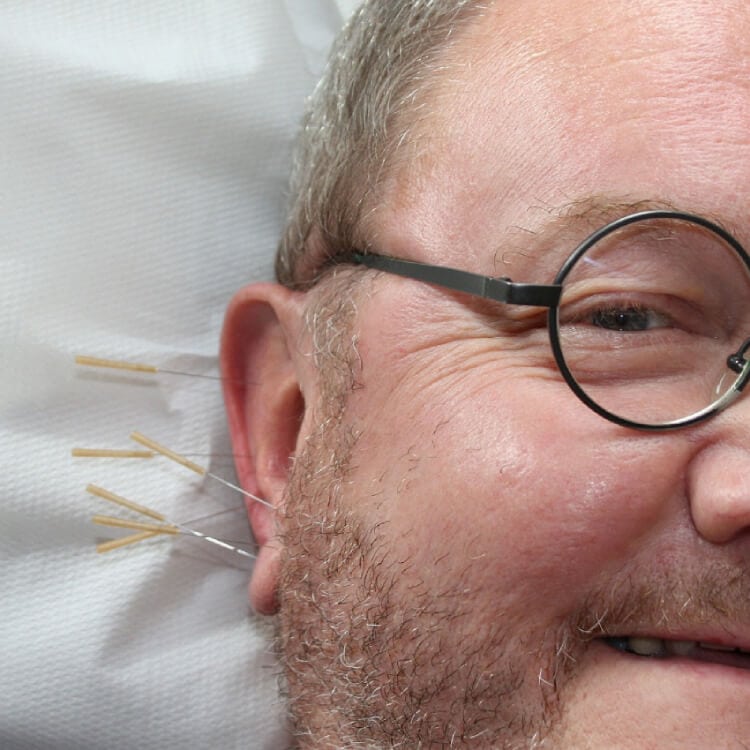
Acupuncture For Pain Management Sounds Great! Will it help me with my pain?
This is a question I hear nearly every day. The answer is most likely that it will. Pain, whether from injury or illness, is one of the most common conditions treated with acupuncture It’s a flexible medicine that can target a specific spot, or area, or the whole body.
Has your spouse been nagging you for the last 20 years to go see someone for your low back pain? Don’t worry, acupuncture can help manage pain regardless of how new or old your pain is. But that doesn’t mean you should wait until it gets worse Usually the earlier it’s addressed the faster you’ll get results.
Did you notice earlier I mentioned acupuncture can help with pain from injury or illness?
Managing pain from sports injuries or even neck strain from sitting at your desk all day is very common. It’s as common as using acupuncture for dealing with pain from cancer treatments, fibromyalgia, headaches, or pain from stomachaches. Acupuncture is not limited to muscular pain.

Has A Medical Professional Not Been Able to Explain Your Pain?
I’ve had a lot of clients with very odd aches and pains that have been considered unexplainable by some professionals.
These people are turned away, discounted, and perhaps given some sort of drug to numb their pain. Fortunately, acupuncture tends to look at things a little differently. It is often able to provide drug-free pain relief for seemingly weird conditions.
How Long Will It Take Acupuncture to Resolve Pain?
Well, it depends. The factors that will determine how many sessions it will take are:
- Type of pain from illness or injury.
- How long the condition has been going on.
- The general health of the person.
- The individual rate of response to acupuncture.
Just like other medical modalities, acupuncture for pain management works over multiple sessions.
From experience, pain is resolved in most cases in those 8-10 sessions. An important note here is that the goal is not just to heal symptoms but correct the malfunction that caused the pain in the first place.
Usually, you will feel some or complete pain relief during your first session.
Can I Use Acupuncture to Help with Pain From Medical Procedures?
In some instances, acupuncture is relied on as the go-to method for drug-free pain relief. For example, acupuncture can be used for pain in birthing or during surgeries.
It is also widely known to relieve the side effects of cancer treatments, during and post-treatment.
The uses for acupuncture don’t stop there. Acupuncture is great for maintenance as well. Just like regular stretching and exercise is good to keep your tissues and joints moving properly, acupuncture is second to none for overall health and pain-free living maintenance.

How Does Acupuncture for Pain Management Work?
Pain is an umbrella term used to describe a wide range of uncomfortable sensations that indicate some level of damage occurring somewhere in the body. Pain is the messenger telling us that a certain area of our body needs attention and healing.
When the pain alarm starts, we can see it activating certain parts of our brain in various assessments.
But these changes don’t just happen in the brain. We can see these changes happening at the site of injury and in the pathways that connect the site of injury with the brain.
When an acupuncture needle is inserted and introduced into specific areas, different types of nerve fibers are stimulated in a very specific way and will cause a cascade of useful chemicals to be released.
The effects of some of the chemicals included in this healing soup include:
- Improve local circulation.
- Decrease pain signaling.
- Reduce inflammation.
- Initiate healing process of local and nearby tissues.
- Aid in fighting infection by stimulating the immune system.
Inserting An Acupuncture Needle into My Foot For Shoulder Pain? How Does That Work?
One style of acupuncture that is extremely effective is called “distal acupuncture”. Distal acupuncture is when the acupuncturist inserts the needles away from where it hurts.
Does your shoulder hurt? Maybe I’ll use your foot. Don’t like your feet touched? Fine, I’ll use your ear instead.
Of course, acupuncture has that wonderful local effect of that rush of healing chemicals we talked about earlier, but there is still another layer to how acupuncture decreases pain.
The answer is that everything is connected through our spine and brain through all the nerves that branch out from it like a tree.
All the tissues that make up our body are full of nerves that bring information to the spinal cord. Then it goes to the brain Then lastly from the brain back down to the spinal cord and back to all the tissues.
Therefore, we also know that acupuncture needles inserted in certain spots and used in certain ways will create the release of our body’s natural pain killers – endorphins. Endorphins are released in the brain so they affect the whole body.
What is ECIWO Biology and How Does it Help Acupuncture Manage Pain?
ECIWO is an acronym for “embryo contains the information of the whole organism” and this explains why acupuncture can relieve pain through the lens of embryology.
At a basic level, this means we start as one tiny cell that splits into two tiny cells that are copies of one another, then they go on to keep splitting into more complex structures.
Even though some cells become specialized to perform certain tasks, such as being a brain cell instead of a toenail cell with very different functions, all the small pieces include the information of every other cell.

Taking this to the next level means that every cell has the blueprint not only for every individual cell but also for the whole organism.
This is a very effective way of thinking about pain management with acupuncture. This explains why some seemingly unrelated pains or dysfunctions are not so strange.
It also opens the door to be able to relieve pain when we want to avoid doing anything directly to the area that hurts. Such as when we’re facing conditions such as physical traumas or post-surgery healing.
Sports Injuries, Wound and Fracture Healing, Post-Surgery Acupuncture.
Managing pain with acupuncture is all about being adaptable. With conditions such as pain from sports injuries, wound healing, fracture healing, or post-surgery pain we often need to avoid inserting needles in the already painful area.
Using the ECIWO biology ideas we talked about earlier, this is not a problem.
I see this all the time in my practice. An example is an athlete who has a sharp pain in her hamstring and comes to see me when the injury is still very painful. Even a little bit of pressure will cause a lot of pain. We don’t want to insert a needle in her hamstring at this stage.
But according to ECIWO thinking the hamstring muscle and bicep muscle on the upper arm have the same functions but on different limbs.
When we insert a needle into this related tissue, we see the local effect of acupuncture but also the effect happening in the other tissue as well.
This is yet another explanation for how doing acupuncture on seemingly random spots on the body relieves pain. This is how we can avoid already injured spots to not cause further damage and succeed in reducing pain.
Can Acupuncture Help Me Be More Flexible?
There are also certain acupuncture points called motor points and when needled will send a signal to the brain to tell that muscle to relax, which will result in increased muscle range of motion.
But this is no shortcut to flexibility, but simply an aid to help you achieve your flexibility goals.
This is yet another reason acupuncture is ideal as an overall health maintenance modality. Many of us tend to push hard in our lives without doing the things to help our bodies recover.
In What Other Ways Can An Acupuncturist Help Manage Pain?
An acupuncturist has many tools other than just acupuncture needles to customize a pain management plan based on your needs.
Some other ways an acupuncturist can relieve pain include:
- Cupping Therapy
- E-Stim
- Gua Sha
- Tui Na
- Bloodletting
Cupping Therapy For Pain And Tension Relief
Cupping is done with the use of either glass or plastic jars. Then fire or a suction device is used to take the air out of the cup. This will allow the cup to attach to the skin.
This technique gives a massage-like pulling sensation on the muscle and skin. You can see in the cup that the skin and other tissue underneath are being pulled into the cup.
The cups will break up scar tissue, muscle knots, and other tight areas in the skin and muscle. This allows a greater range of motion and decreased tension, achiness, and pain.
Cupping is usually done on areas of the body where big muscles are present. Cupping on the back, neck, and legs is very popular.
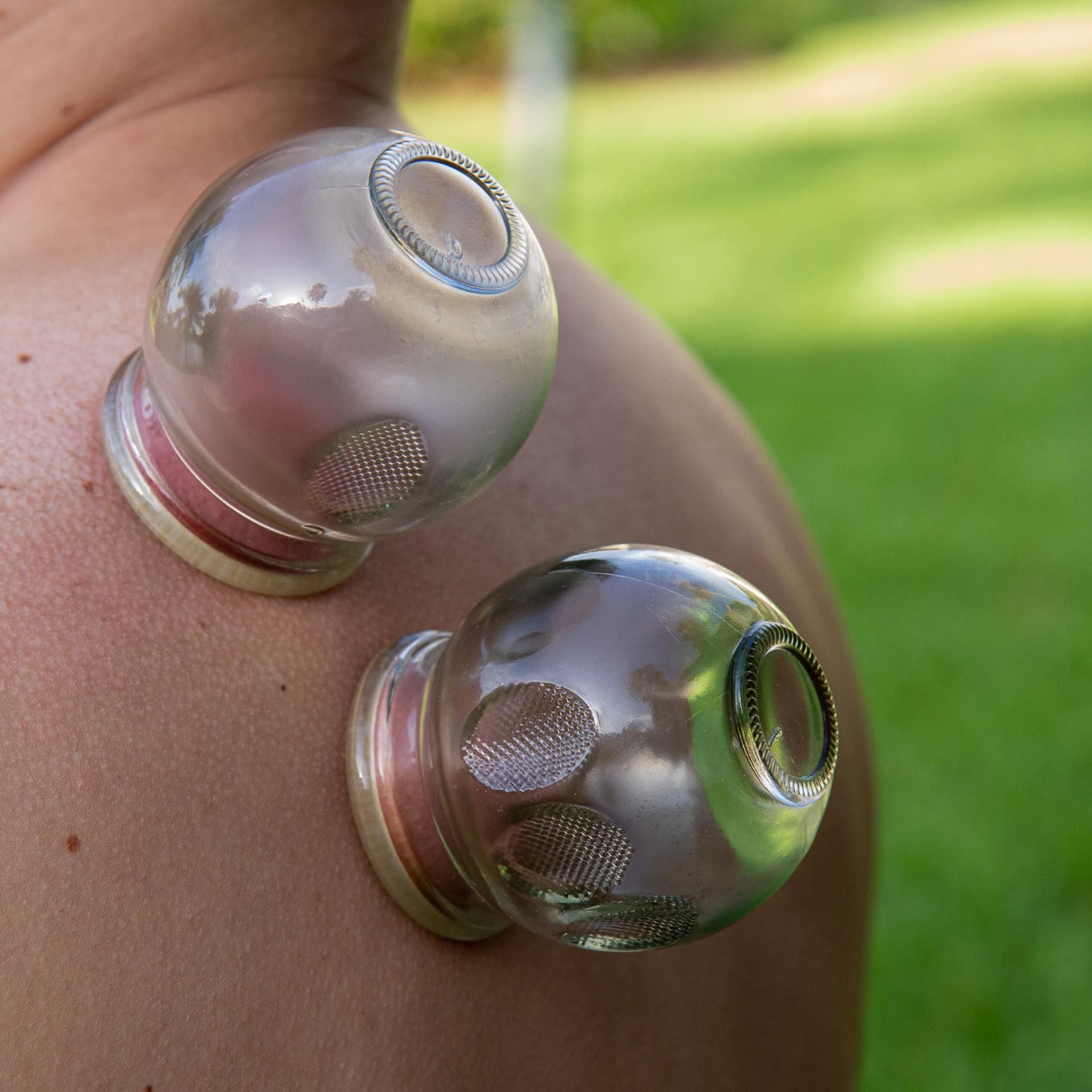
Due to the suction of the cups, it is common for light red to dark purple bruise-like circles to appear. No need to worry, they will go away on their own after a couple of days to a week.
E-Stim Acupuncture
E-Stim connects a specific machine to the acupuncture needles. The machine will send a current into the needles to create a certain outcome. Different settings on the machine will create different results.
While connected to the E-stim machine, you will feel a tapping or buzzing sensation. With different settings on the machine, the sensation you feel could be a slow or fast pinging or buzzing.
When the machine is turned on and settings adjusted, I slowly walk you through the process. I will tell you what it is supposed to feel like and then I turn the machine up slowly. I stop when you can feel the sensation but it is still very comfortable.
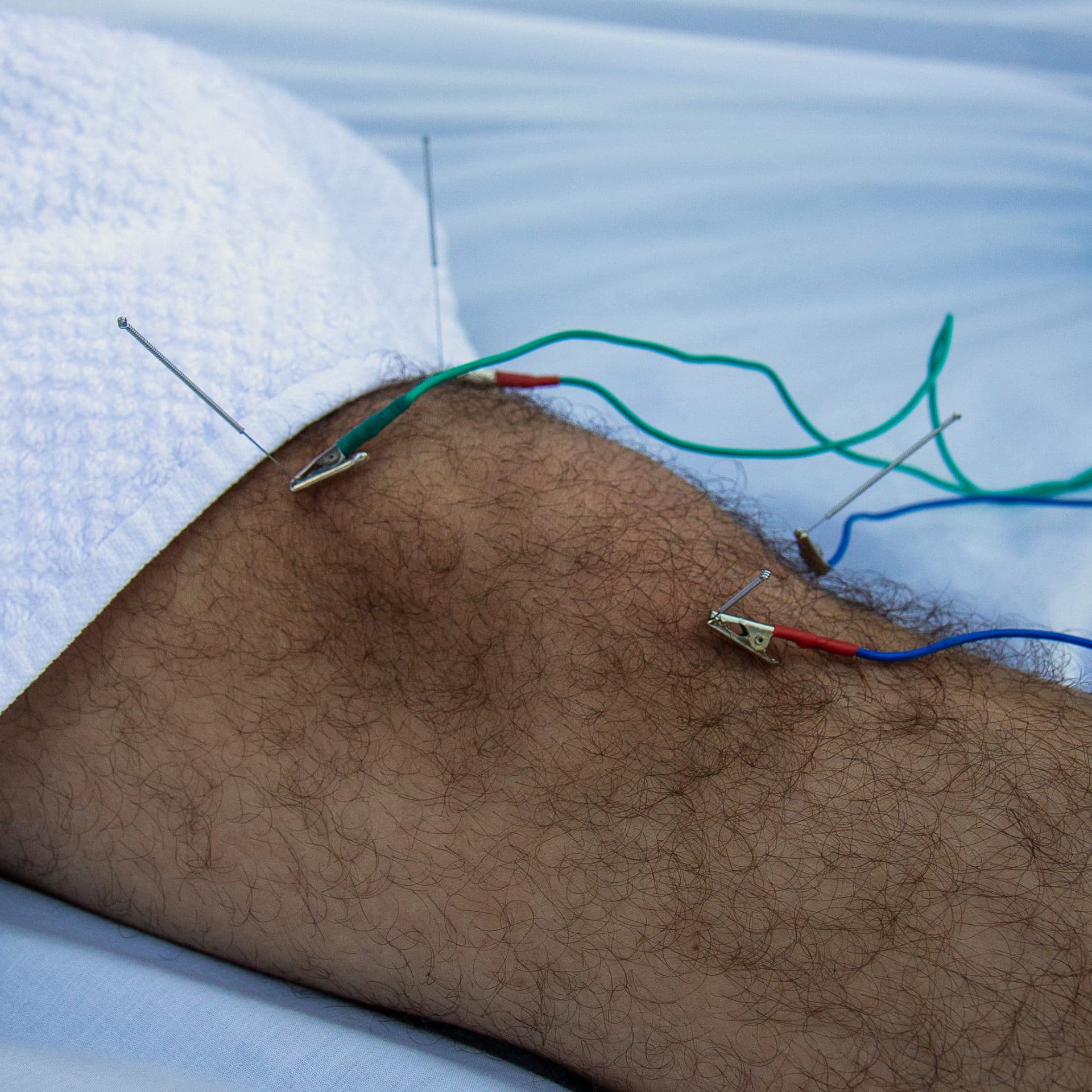
Gua Sha
Better known as scraping or scraping massage is Gua Sha. The end goal is similar to that of cupping but is usually a little more intense. This is a more forcible way of creating space between layers of tissue and removing muscle tension.
Like cupping, Gua Sha will leave red or purple marks after the session is done. The Gua Sha tool is a hard object and is most often a specialized tool. Other options that can be used are coins or Chinese soup spoons.
It can also be used to bring down fevers or help the common cold go away faster.
Gua Sha is a great tool for dealing with all sorts of tightness and rigidity in muscles. There is usually a noticeable difference before and after a session.
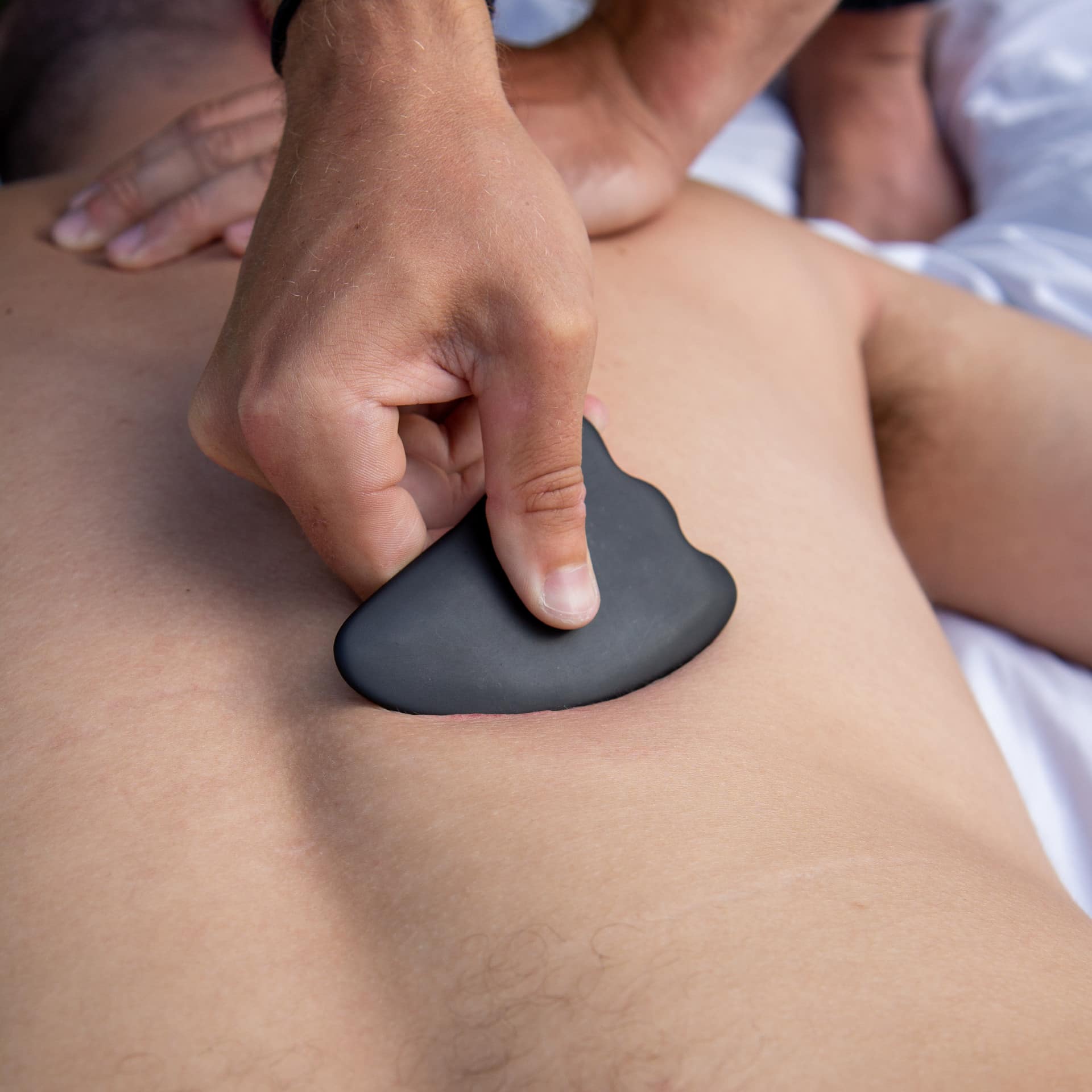
Tui Na
Tui Na is also known as Chinese Medical Massage. This includes a wide array of hands-on techniques as well as exercise-like movements.
Tui Na will usually be done as an add-on to other therapies.
The techniques involve the use of the practitioner’s elbows, hands, and forearms.
The non-hands-on Tui Na techniques are related to the practice of Qi Gong or Tai Chi. These are the practices of moving subtle energy currents in the body to affect positive change.
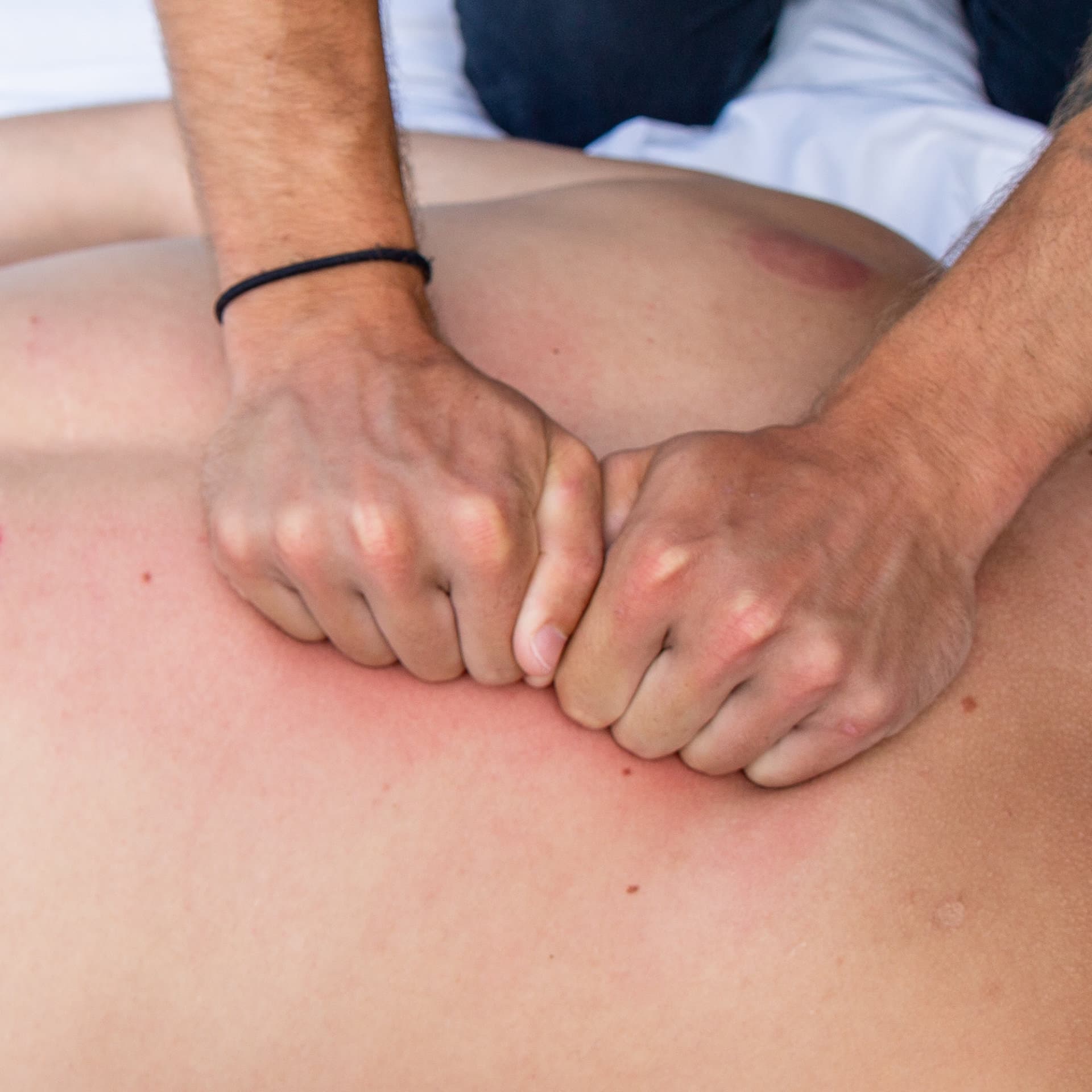
Bloodletting – A Powerful Pain Relief Technique
Bloodletting is a very effective solution to both short-term and long-term conditions. It is very quick to complete and usually creates instant results.
Just like acupuncture needles, the lancets for bloodletting are single-use. After the stainless steel lancet is used, it is disposed of.
The procedure is very quick. A specific area is identified, cleaned with an alcohol swab, and the area is quickly pricked. A few drops of blood come out and that’s it!
The science behind bloodletting is that removing blood in certain areas will decongest your circulatory system. This allows new fresh blood to move through previously stuffy areas.
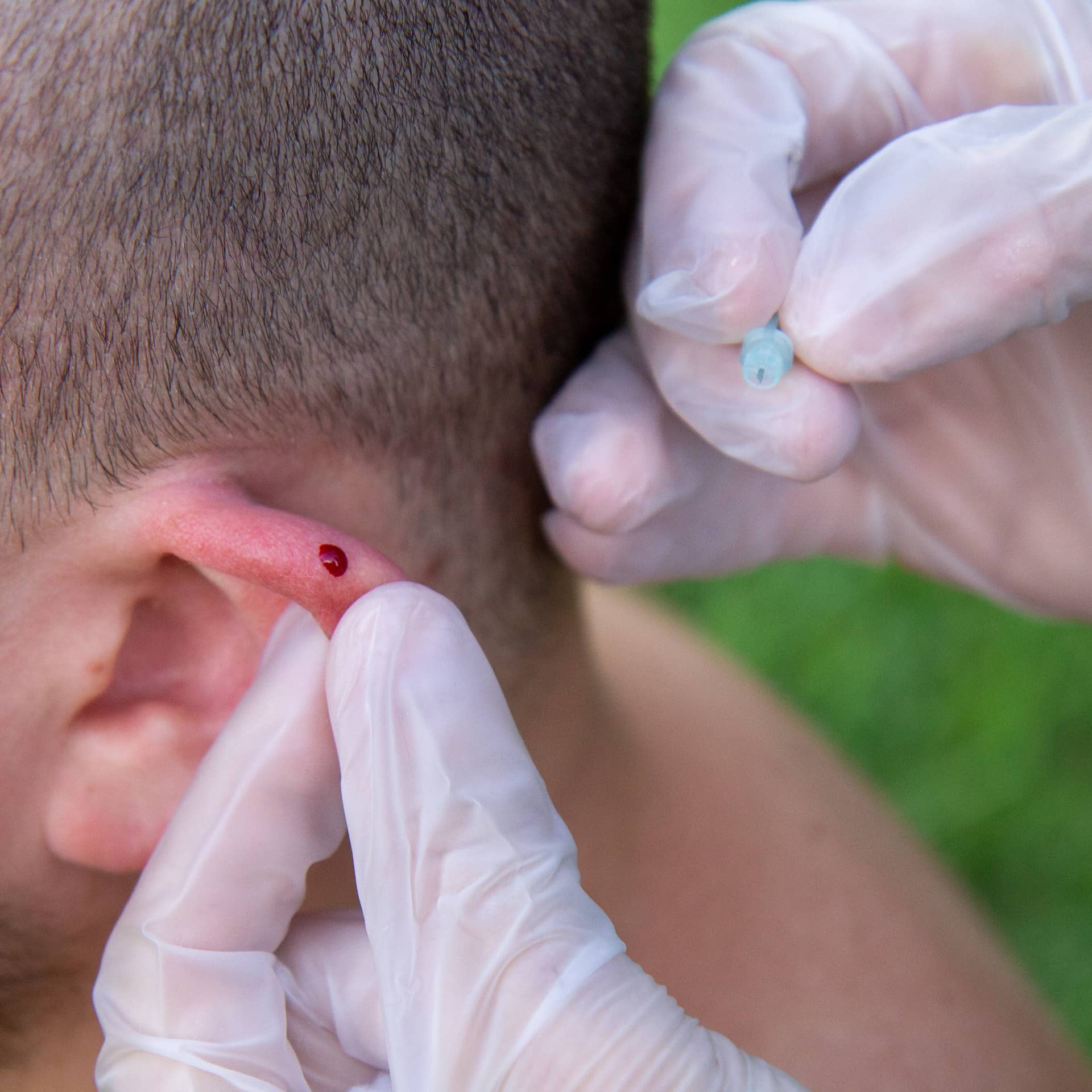
It’s Time To Try Acupuncture For Pain Management!
There you have it. Acupuncture is a drug-free, highly effective, and economical way to manage and relieve pain.
There are many layers for why it is so effective for dealing with pain, but also why it’s great for overall health maintenance and prevention of future pain.